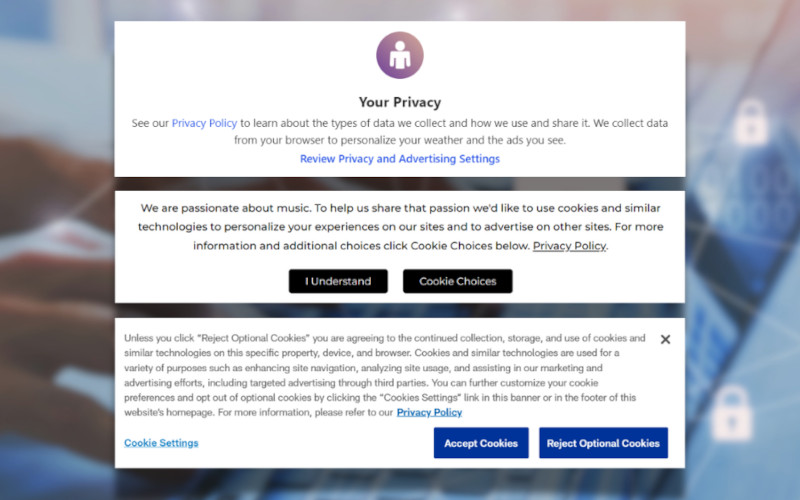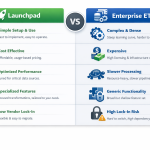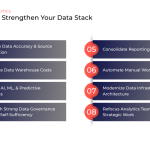
Effective data collection is key for any website, but the growing emphasis on user privacy and data protection has made this increasingly challenging. The implementation and maintenance of cookie consent manager banners plays a significant role in determining how much data a website can collect.
This article outlines how different consent models, regulatory requirements, and user interface choices influence data collection. We'll also discuss strategies e-commerce sites can use to mitigate data loss while remaining compliant with privacy laws. Understanding these factors is essential for balancing data-driven insights with respect for user privacy.
1. Types of Cookie Consent Models
- Opt-in Model: Requires users to actively consent to the use of cookies. This model tends to reduce the amount of data collected, as many users may choose not to opt-in.
- Opt-out Model: Assumes consent unless the user actively opts out. This model usually results in higher data collection rates, but may face legal challenges in regions with stricter privacy regulations.
- Implied Consent Model: Assumes consent through continued use of the website. While easier to implement, this model is becoming less common due to stricter regulations.
- The Implied Consent Model assumes user consent through continued website use. This model can allow for the collection of various data types:
- Essential cookies for user sessions and ensures website security.
- Functional cookies for user preferences like language and region, and enables features like shopping carts.
- Analytics cookies for user behavior and website performance.
- Advertising cookies for targeting, personalization, and measurement.
- Third-Party cookies for digital marketing and social media prospecting and retargeting.
- The Implied Consent Model assumes user consent through continued website use. This model can allow for the collection of various data types:
2. Consent Management Platforms
- Customizable Options: Many platforms allow users to customize their consent settings, choosing specific types of cookies they are comfortable with. This can lead to partial data collection where only certain types of cookies (e.g., functional but not tracking) are allowed.
- Granular Consent: Platforms that offer granular consent options may see varied data collection rates based on user preferences for analytics, advertising, and personalization cookies.
3. Regulatory Compliance
- GDPR (General Data Protection Regulation): In the EU, GDPR requires explicit opt-in consent for cookies, significantly limiting data collection if users do not consent.
- CCPA (California Consumer Privacy Act): CCPA gives consumers the right to opt-out of the sale of personal data, impacting data collected for marketing and tracking purposes.
- Regional Regulations: Various countries have their own legislation that may require different levels of consent and impact data collection accordingly.
4. User Interface and Experience
- Consent Banner Design: The design and wording of consent banners can influence user decisions. Clear, user-friendly banners tend to result in higher opt-in rates compared to confusing or lengthy ones.
- Pre-selected Options: Some consent tools may have certain options pre-selected, which can increase data collection if users do not actively change the settings.
5. Impact on Data Types
- Analytics Data: Reduced collection can lead to incomplete analytics, affecting insights into user behavior, conversion rates, and overall website performance.
- Personalization and Marketing Data: Limits on tracking cookies affect personalized marketing efforts, retargeting campaigns, and overall customer experience.
How Can I Mitigate Data Loss from Cookie Collection Restrictions?
When it comes to data collection, relying solely on cookie consent can lead to significant data loss, especially as privacy regulations become stricter and users become more cautious.
However, there are several strategies that can help businesses mitigate this loss while still respecting user privacy and staying compliant with laws.
From server-side tracking to focusing on first-party data, these approaches can ensure that you're still gathering some of the insights you need to drive your business forward, even in a more privacy-conscious digital landscape.
- Data Warehousing: We recommend that every business stream and store their data in a warehouse like Google BigQuery, Azure, Snowflake, etc. This approach ensures that even if cookies expire down the line, the data you've transferred remains secure and accessible for future analysis.
- Even for a mid-sized company, getting started with a data warehouse is easier and more affordable than you may think. Read this article for more: Budget Season - Modernizing Your Data Analytics Stack for 2025
- Server-Side Tracking: Implementing server-side tracking reduces your reliance on client-side cookies, which are more likely to be blocked or declined.
- First-Party Data Collection: Allowing users to create accounts with your business helps collect first-party data, which is less impacted by cookie consent settings. On e-commerce websites, even “check out as guest” options result in the majority of users creating accounts post-purchase. Ongoing collection of this type of data is key for maintaining robust analytics and marketing strategies.
Creating Better Performance Analytics Dashboards
As laws and regulations progress, and as individuals become more educated about their online privacy rights, it's reasonable to expect a reduction in both the granularity and type of data being collected from various sources over time.
This is why, instead of relying on a single analytics application to measure website performance, we recommend extracting data from your e-commerce engine's product reporting suite and visualizing it alongside your channel-specific trends in GA4.
Many e-commerce platforms like Shopify offer native analytics that include sales data, transaction history, and customer insights. Exporting and incorporating this data into reports can help you put together a more cohesive view of your website's performance and consumer behavior over time.
Looking for Guidance?
Businesses that strive to maintain a strong digital presence must also continuously balance regulatory compliance with effective data collection. By adopting user-friendly consent practices, exploring alternative data collection methods, and focusing on first-party data, e-commerce sites can continue to gather valuable insights while respecting user privacy.





